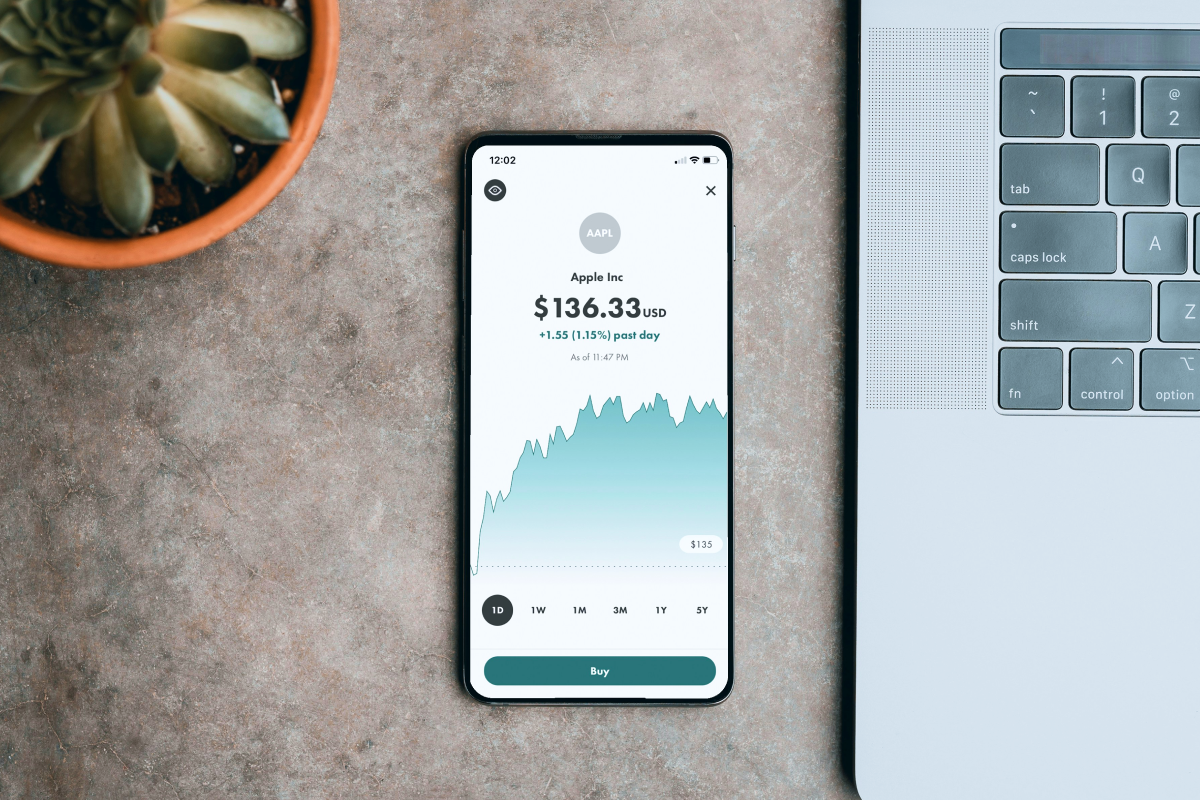Well, let’s take it from the beginning!
The startup journey was never an easy one.It is hardly a secret that 75% of startups eventually failed. One of the main reasons for these failures is creating a product, or an app, that never resonates with the market.
The Lean Canvas is a framework which makes it easier for startups to predict their business success in a flexible way.
So, if you’re going to launch an MVP with a high success rate, you’ll want to plan it out with the Lean Canvas business model.
My name is Aliona and I have been working as a Project Manager at Uptech for over 3 years. My main focus is delivering successful project outcomes to Uptech clients. As an Agile expert, I excel at prioritizing project features and ensuring they meet customer requirements. Lean canvas model helps me test ideas and solutions early on and make sure they align with the needs of the users. I deeply understand project management principles and possesses expertise in requirements gathering, testing, and user interviews. I have practiced Lean Canvas methodology on different projects, one of them is Nomad – a real estate startup based in Dubai.
In this guide, I’ll show you how to use Lean Canvas framework, compare it with a classic business model and explain how your business can get the max of it.

What is Lean Canvas?
The Lean Canvas definition was first coined by Ash Maurya, where he repurposed the conventional business model canvas to suit startups’ needs.
The Lean Canvas business model allows a problem-solution strategy to be easily described on paper. It helps to put ideas into perspective and serve as a guide for startups to validate their hypotheses. The Lean Canvas’s ultimate goal is to help startup founders avoid costly failure, where they built products with no takers.
Understanding customers is key to startup success, and the Lean Canvas is revised to reflect this. It allows founders to construct the business model in a way that revolves around the customer, instead of focusing on strategies suited for larger companies.
Besides that, using the Lean Canvas business model also allows you to explore how your competitors are solving existing problems. It helps you to offer a better solution, which stands out from the crowd.
Lean Canvas vs. Classic Business Model Canvas
So what’s the difference between the two business models? Let’s explore, starting with classic Business Model Canvas.
Classic Business Model Structure
So, how does Lean Canvas differ from the business model canvas, where it was evolved upon. The business model canvas, which was created by Alexander Osterwalder, is based on the following 9 columns:
- Key partners
- Key activities
- Key resources
- Value proposition
- Customer relationships
- Channels
- Customer segments
- Cost structure
- Revenue streams
The business model canvas was designed to help existing businesses to strategize operations between various stakeholders. It was never meant to be a tool for a lean startup.
Lean Canvas Structure
Meanwhile, the Lean Canvas adopts the same structure from the business model canvas but makes the following changes to the columns:
- Key partners → Problems
- Key activities → Solutions
- Key resources → Metrics
- Value proposition → Unfair advantage
By amending the 4 columns, the canvas is now an actionable document for startups. Instead of being used for strategic alignments, the Lean Canvas is now suited for actionable approaches in validating ideas, measuring, and determining the startup’s edge.

Why is canvas the best option for startups?
So what makes Lean Canvas the right option when it comes to startups? Let’s look at these three compelling arguments:

Quick creation and update
When you are an aspiring startup, quickness and agility are the fundamental principles of doing business for you. In terms of speed and agility Lean Canvas is your best helper.
What would you choose as a startup co-founder? A succinct 1-page document summarizing all the necessary information about your product or a long bulky pile of documentation covering everything at once? Obviously, the first one is the option.
Moreover, a Lean Canvas is not only fast to create, but also super easy to edit. Startups are all about rapid changes and on-the-spot edits. And again, Lean Canvas is your life saver. You can easily make changes and edit the document, without scrolling down a pile of digital paper.
Succinct and focused
Another reason to use a Lean Canvas on your project is to have it all centered in one document. A Lean Canvas allows you to outline the main things, get rid of the unnecessary parts and focus on what matters.
So in the end you have a clear and general picture of how your business is going with no unnecessary details distracting your focus.
Easy to Comprehend
A Lean Canvas can be your link of connection between you and stakeholders. Briefly summarizing all the necessary information about the product, it keeps everyone involved in the product development on the same page.
A Lean Canvas usually speaks the same language, thus is easy to comprehend for everyone involved: developers, co-founders, managers and stakeholders.
Concise
It isn’t cluttered with unnecessary information. Just plain, simple ideas that are straight to the point.

How to Build Your Lean Canvas?
Lean Canvas helps startup owners to support MVP development. It keeps the problems, solutions in perspective, and allows you to discover if the market will potentially accept the product.
Customer Segments
Here’s where you define the target group of consumers you’re serving, and they’re paying in return.
There may be more than one group of customers that fit into this section. For example, renters and buyers are typical customers for a real estate app but don’t forget sellers, landlords, and agents who are also parts of your business and may use the product. The latter parties may not necessarily use the app, but are equally involved in the business process.
Don’t focus on the end customer who’s “buying a home” when creating the app. Think of all the parties that could be involved.
If you’re serving more than one customer segment, it may be feasible to create one lean canvas for each.
Problem
List down the top 3 problems that you’re trying to solve in this column. The problems help you to devise the solutions.
To make it easier, put yourself into the customer’s shoes. Think of what they are going through in their daily routine and their challenges in getting jobs done.
For example, it’s hard to find a trustworthy agent in the real estate industry. Finding the perfect property often involves dozens of viewing. There are also hassles in documents signing and moving-in.
Remember that different markets may have different problems.
Unique Value Proposition
The unique value proposition is a statement of how your app is different from other competitors. It serves as an argument for why customers should choose your product over others.
An effective UVP can be derived by focusing on the benefits when the problems are solved. For example, it could be as simple as “Get a home of your dream with no effort”.
Get feedback from the early adopters to ensure that you’re striking the chords with the UVP.
Solution
You’ve got the problems listed, and now it’s time to offer solutions.
Expect changes on what you’ve filled up as the probable solutions. Testing and refining are part of the Lean process.
At this point, there are no right or wrong solutions. You can brainstorm ideas with your co-founders, team members, or family to get a list of probable ideas.
Expert Protip: You can have more than 1 idea at this point. But you should remember one thing – all of them are just assumptions for now. And all of them will have to go through the testing and validation process.
For example, the tedious document signing and payment process when buying a home can be solved by digitization with an eSign and Payment systems.
Expert Protip: At this stage ask yourself a question: how will I know that the problem has been solved? How will you measure your results? This is important, that you track the Product Metrics of your project, as it gives you a calculative picture of what steps you need to take further.
Channels
A functional product will never be successful if it never reaches its intended audience. Channels are where you list the possible methods of marketing the app to the target customer.
You’ll be spoilt for choices as social media, mass media, digital publications, brick & mortar advertising, and more are possible ways to get the message out. However, the key is focusing on where your audience is.
If you’re targeting young professionals who are hoping to rent an apartment, running ads on Facebook is a good bet if most of them are on popular social media.
Revenue Streams
Every startup should eventually make a profit. Here’s where you’ll want to have an estimate of the earnings from the app and your pricing strategy.
As in the case of real estate, offering apartments with lower quality could be a good move if you’re targeting students. The lower margin is compensated by the high demands in areas with colleges.
On the other hand, selling penthouses may offer a higher margin, but you’ll have to spend more effort in customer service and premium services.
Cost structure
When you’re running a startup, it’s important to be clear of the cost involved. List down the fixed and variable cost it takes to bring the MVP into life.
As your startup progresses, the cost may change to support the operation. Adjust the cost structure accordingly.
Among others, building a real estate app also involves marketing and user research, which will incur logistics, transportation, and labor expenses.
Key Metrics
You can only know if your app is heading in the right direction if you measure it against a preset of expectations. These expectations are listed down in this column.
While it’s preferable to have quantifiable metrics, there are occasions where you'll need to be creative in measuring non-quantifiable metrics. For example, you can’t track word-of-mouth success rate, but you’re able to track mentions on the app on social media.
For a real estate app, registration and request for viewing are good indicators of interest. When the users start booking properties over it, you know that you’ve got the problem-solving part right.
Unfair Advantage
An unfair advantage is something that cannot be easily met by your competitors.
Do you have a team of domain experts, ready buyers, or an extensive network that is more than ready to market the product?
This often eludes many founders initially but may become apparent when you’ve got feedback from the early users. If you can’t think of any, revisit this column as you progress.

Lean Canvas in Use: Uptech’s Experience
Making a Lean Canvas is an important part of Uptech’s Product Studio Session. In particular, Lean Canvas is a deliverable, created at the end of the Discovery Phase. This is a product development phase that helps us validate ideas and hypotheses before actually implementing them at the project.
Clients value us for deep expertise in Product Development and Discovery in particular. We usually take responsibility for the whole process, hold brainstorms, make hypotheses, build prototypes and test them with users. This is a long and an effort-consuming process. But it totally pays off, as it gives us a clear understanding of what the users really need.
For example, in the Yaza case. The startup was meant to become another social media app with a geolocation feature. However, once we conducted a Discovery process, we managed to see who our users really are and what they need. And this realization totally changed our positioning from a social media tool to a real estate platform. Yes, as unexpected as it is!
So the Discovery phase is extra important to understand where to make your next step. And a Lean Canvas is a great instrument to help you on this way.
Here’s an example of a Leanof lean Canvas for you to see how the whole picture may look like:

We can vouch that they work for the founders we work with. As the startup grows, they’ll revisit and update the canvases, and it helps their team stay on the same page. It keeps the team focused, which is crucial as a startup spurs ahead.
Summary
It’s fair to say that adopting a lean canvas for your startup is the least you can do for success. Don’t launch an app without having established the structure of the canvas. If you’re still in doubt of using lean canvas in product development, drop us an email here, and we’ll be glad to help.









































































.avif)


























